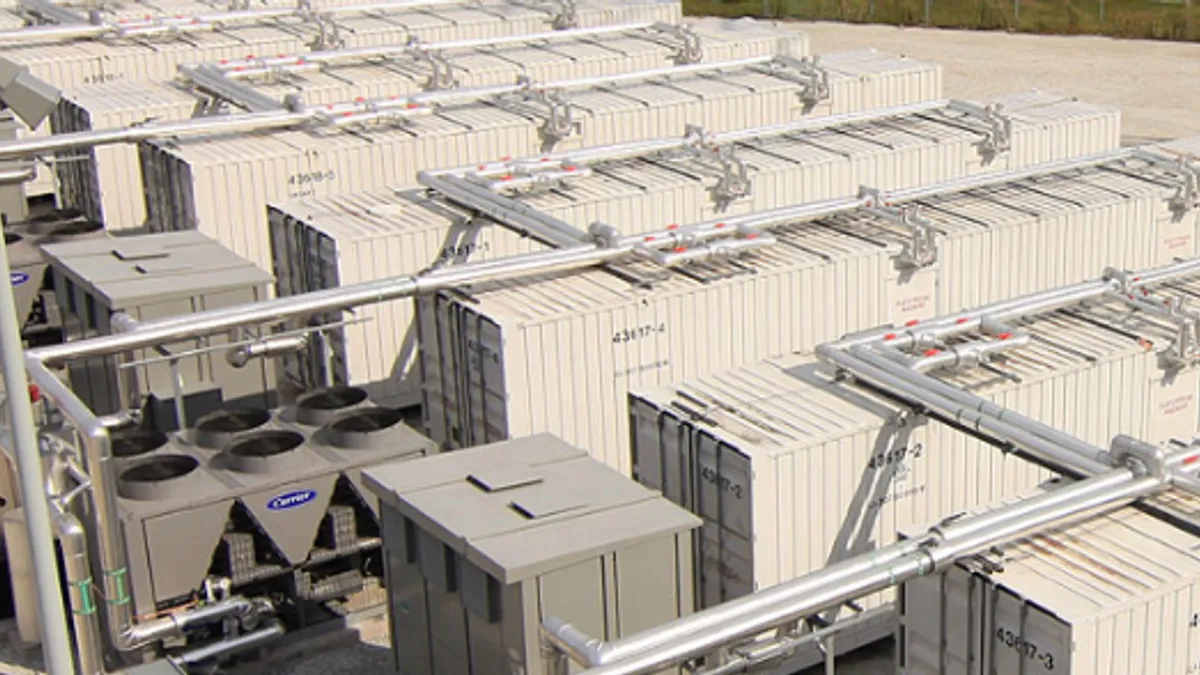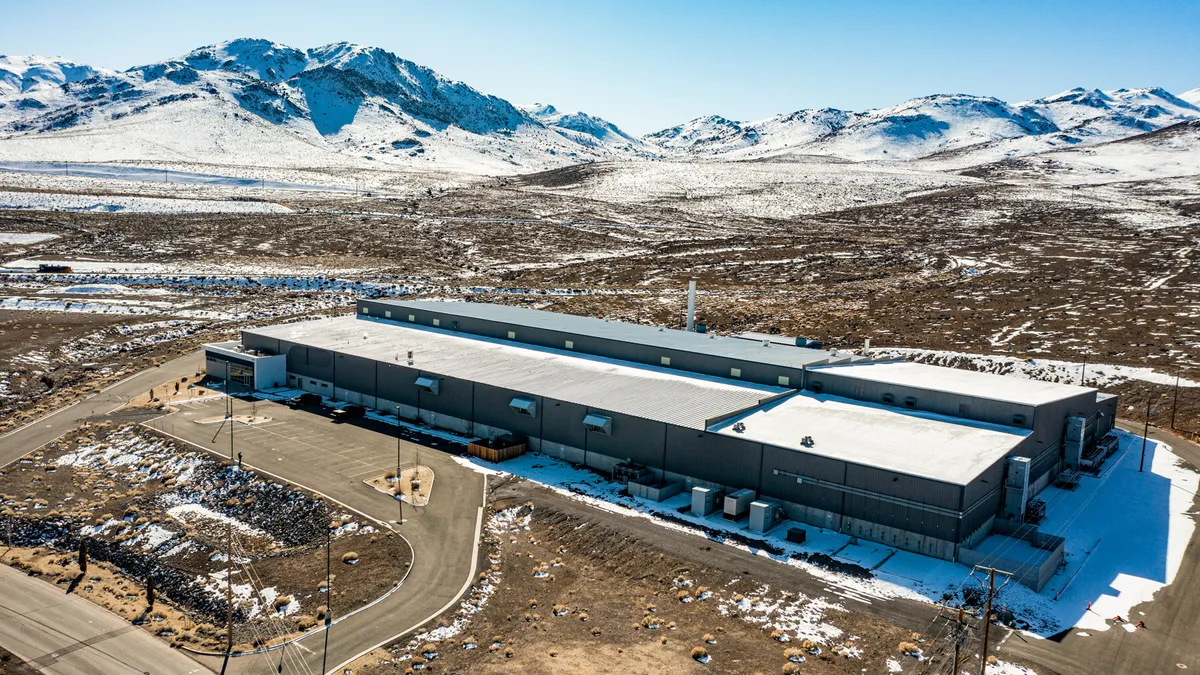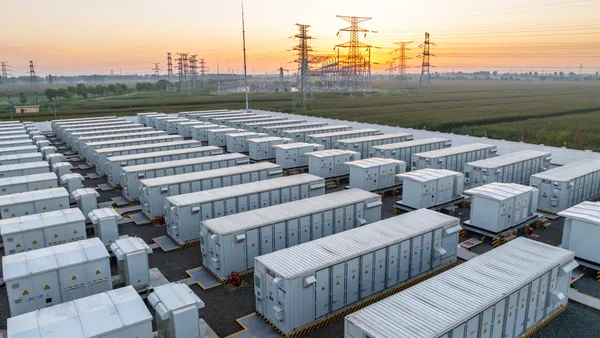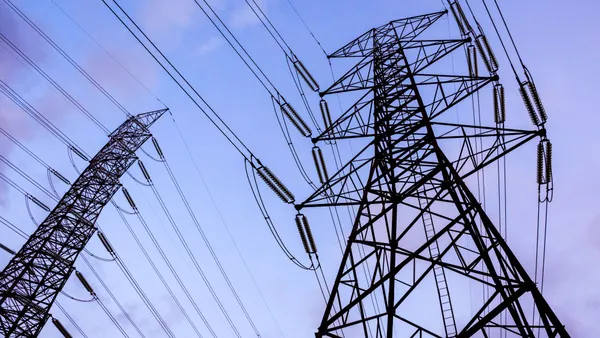Assessing the value of energy storage is one of the burning issues facing the electricity sector today, and a new valuation matrix from the firm Lazard could give utilities and policymakers a more accurate idea of the costs and benefits various storage technologies provide.
“The battery industry in the recent past has been focused on small batteries for consumer electronics, not on issues like integrating renewables and regulating frequency,” said Matthew Tappin, a spokesperson for Lazard and contributing author for the consultancy's recent report, "Levelized Cost of Storage Analysis 1.0."
“Now people are taking on these industrial scale challenges because the cost of renewable energy is dropping and wind are solar beginning to be widely integrated into the grid,” he added. “We believe this will lead to an increase in battery and other energy storage manufacturing capacity.”
The resulting increase in storage capability and capacity will open a "virtuous cycle" for storage and renewables, Tappin said. As storage improves, it will allow for more renewables on the grid, which will in turn lead to a faster ramp-up in storage manufacturing.
Although the global battery industry is large, the energy storage system manufacturing sector is “tiny” compared to other industries, and costs will come down “dramatically” as it scales up, Tappin said.
“We think storage is at an inflection point," he said, "like renewables were in 2008.”
Some storage technologies are already cost-competitive with conventional alternatives in certain applications like frequency regulation or deferring distribution investment. Others, for other applications, are close.
Energy storage system technologies are “not very close [to price parity] in relatively high duration, low power/capacity use cases, like putting a battery in a factory or in a garage to charge an EV,” Tappin said.
Two measures of storage
The crucial thing to understand about energy storage system technologies is they are rated both for “instantaneous power capacity and potential energy output,” the report explains.
Instantaneous power capacity is “the maximum output of the inverter (in MW, kW, etc.) under specific operational and physical conditions.” Potential energy output, often called "usable energy," is “the maximum amount of energy (in MWh, kWh, etc.) the system can store at one point in time.”
Building on methodologies developed for its nine listings of the levelized cost of energy (LCOE) for generation technologies, Lazard considered both duration and capacity for its levelized cost of storage (LCOS). The study considered both the capital cost of the system per unit of instantaneous power capacity and per unit of potential energy output.
“The usable energy, or energy capacity, of a 1 MW battery that has eight hours of duration would be 8 MWh,” Tappin said, “but how much energy, in terms of MWh, is dispatched onto the grid is a function of how many times the battery cycles.”
In today’s marketplace, energy storage systems are most economically viable “in use cases that require relatively greater power capacity and flexibility as opposed to energy density or duration,” Lazard reports. Increasing system duration costs more than system power, meaning battery life is harder and more expensive to increase than battery size.
Storage technology costs
The Lazard analysis contains a wealth of calculated values, but the core of it is a range of levelized costs for eight energy storage technologies.
The study evaluates them in five behind-the-meter storage applications (micro-grid, island grid, commercial and industrial, commercial appliance, and residential) and five applications in front of the meter (transmission system, peaker replacement, frequency regulation, distribution services, and PV integration).
The eight technologies examined are Compressed Air Energy Storage (CAES), flow batteries, flywheels, advanced lead-acid batteries, lithium-ion batteries, Pumped Hydro Storage (PHS), sodium batteries, and zinc batteries. Not all, however, are assessed for both in-front and behind-the-meter applications, since some of the technologies cannot be scaled down for deployment at the customer site.
For applications in front of the meter, the paper compares energy storage facilities to Lazard's $165-$218/MWh levelized cost for a natural gas peaker plant, giving a "rough proxy" for how storage competes against conventional generation, Tappin said.
For applications behind the meter, the comparison point is Lazard's $212-$281/MWh levelized cost estimate for a diesel reciprocating engine.
The analysis shows that for grid-scale applications, the lithium-ion battery's $211-$275/MWh can compete in some cases with the cost of natural gas peaker plants, and the LCOS of $276/MWh for flywheels isn't far off.
Both technologies, co-located with renewables installations, have won contracts in competitive bidding to sell frequency regulation services to the PJM Interconnection transmission system.
Providers of frequency regulation services are often paid high rates in organized markets, and that may have helped the storage technologies' cost-competitiveness since the facilities can also offer services to adjacent renewables installations. The fixed-price, long-term contracts for the output of such storage facilities can also offer a hedge for grid operators and utilities against natural gas price spikes.
For the deferral of transmission system investment, PHS at $188-$274/MWh and CAES at $192/MWh may be able to compete successfully because they offer very large scale. But, Tappin pointed out, that likely only applies at the limited locations where they can be sited.
While Lazard's analysis shows some grid-scale storage to be cost-competitive, the behind-the-meter applications have much room for improvement.
At their lowest cost point, lithium-ion batteries’ $1,034/MWh LCOS in residential applications fails to live up to the public narrative about energy storage offering consumers the opportunity for grid defection, Tappin said.
Flow batteries at $721/MWh and advanced lead acid batteries at $1,101/MWh aren’t much better. All are “deeply out of the money compared to the conventional option of a diesel engine," he said.
Such “potentially transformational use cases,” the paper noted, “require relatively greater energy density and duration, as opposed to power capacity.”
Some significant cost declines are expected by Lazard’s industry participants, the paper notes.
“Lithium is expected to experience the greatest five year battery capital cost decline (~50%), while flow batteries and lead are expected to experience five year battery capital cost declines of ~40% and ~25%, respectively.”
Cutting even some of the report's more competitive LCOSs in half means energy storage technologies “may be positioned to displace a significant portion of future gas-fired generation capacity, in particular as a replacement for peaking gas turbine facilities,” the paper reported. That alone would drive the virtuous cycle that Tappin foresees.
“And there are multiple uses for an energy storage system,” Tappin stressed. “Though it is not what the point of this work is, on a value basis, different storage technologies might be deeply in the money against the value associated with a gas peaker.”
Cost vs. value
Lazard's analysis builds on recent scholarship seeking to define and quantify the various values of energy storage to utilities and grid operators.
In a recent Rocky Mountain Institute study on the economics of energy storage, researchers compile 13 fundamental services provided by transmission-connected storage, distribution-connected storage, and behind-the-meter storage. Then they evaluate how utilities, customers and grid operators use those services.
The net value of storage varies and, with today’s cost structures, “batteries deployed for only a single primary service generally do not provide a net economic benefit,” the RMI study concluded. But stacking several of the 13 services “shifts the economics in favor of storage.”
In economic terms, when a battery is used for more than a single application, the present value of lifetime revenue can be greater than the present value of lifetime costs.
Unlike the RMI study, Lazard focused specifically on the cost parameters around single use cases. The levelized cost of storage is intended to make the discussion about storage uses and costs on both sides of the meter more rigorous, much in the same way its LCOE studies clarified questions about generation, Tappin said.
Lazard’s industry participants pointed out that “the value of a battery that can do three or four things is higher than is indicated by its cost for the single use,” he added. “That is exactly right. This report is not about value. It is about cost. If you can extract value greater than the cost, it is a better value proposition.”
The conversation about energy storage “was shifting from one use case to another without definitional rigor,” Tappin said. “With this rigor on costs, users can stack applications and find value.”
How utilities should approach storage
For anyone thinking about investing, the first thing to understand is that “there is no single energy storage,” Tappin said. “There are use cases and within those use cases there are technologies that solve them in different ways and create problems and have benefits of their own.”
For a utility, there are already opportunities, like being able to defer transmission or distribution system investments, but there are also impacts that could seem like threats to the utility business model.
An example is the now cost-competitive use by commercial-industrial customers to shave peak electricity consumption and cut demand charges that can be “a large part ... of their bills,” Tappin said.
Utilities could see this as a threat to revenues. But a more complete understanding of the storage landscape might allow them see an opportunity, he suggested. Utilities could, for instance, work with their regulators to develop policies that allow them to offer storage systems to commercial-industrial end users and get that service included into the rate base.
For policymakers and regulators, Lazard’s longstanding position has been that resource planning should be cost-based and include a balanced mix of generation and other technologies. Like the renewable generation its LCOE work has done so much to justify, energy storage systems are “here to stay,” Tappin said.
“Storage can or will be able to solve a lot of very specific problems in the coming years as costs decline," he said. "But an aggressive mandate that crowds out other generation and other innovations is not good planning."






















